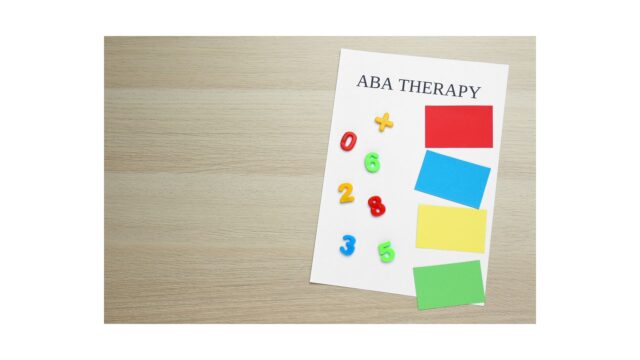Navigating the complex landscape of behavior change can be a daunting task for individuals and families dealing with conditions such as autism spectrum disorder (ASD) or other developmental disabilities. Fortunately, there exists a proven method that offers hope and tangible results: Applied Behavior Analysis (ABA) therapy. ABA therapy is a systematic approach to understanding and improving behavior, grounded in decades of research and practice.
In this comprehensive exploration, we delve into the transformative benefits of ABA therapy. From its origins and core principles to its practical applications in real-world settings, we uncover the profound impact this therapy can have on individuals of all ages and abilities. Whether you’re a parent seeking support for a child with ASD, an educator striving to create inclusive learning environments, or simply curious about the power of behavioral interventions, this guide will provide valuable insights and actionable strategies. Join us as we embark on a journey to unlock the potential for positive behavior change through the lens of ABA therapy.
Tailoring ABA Interventions to Individual Needs
Understanding Individualization in ABA Therapy
Central to the philosophy of ABA therapy is the recognition that no two individuals are alike. As such, a one-size-fits-all approach to intervention is not conducive to meaningful progress. Instead, ABA therapists conduct thorough assessments to gain a comprehensive understanding of the individual’s unique characteristics, including their strengths, challenges, and preferences. This information serves as the foundation for developing individualized treatment plans that are tailored to address specific goals and objectives.

Assessment and Functional Analysis
The process of tailoring ABA interventions begins with a thorough assessment of the individual’s behavior and environment. ABA therapists use a variety of assessment tools and techniques to gather data, including direct observation, interviews with caregivers, and standardized assessments. Additionally, functional behavior assessments (FBAs) are conducted to identify the underlying functions of problem behaviors and inform the development of targeted intervention strategies. By understanding the function of behavior, therapists can implement interventions that effectively address the root cause, rather than simply treating the symptoms.
Setting Goals and Objectives
Based on the information gathered during the assessment process, ABA therapists work collaboratively with caregivers and other members of the treatment team to establish clear and measurable goals for intervention. These goals are specific to the individual’s needs and may encompass a range of areas, including communication, social skills, self-care, and academic skills. By setting achievable objectives, therapists provide a roadmap for progress and ensure that interventions are aligned with the individual’s long-term aspirations.
Customizing Intervention Strategies
With goals in place, ABA therapists develop intervention strategies that are tailored to the individual’s unique profile and preferences. This may involve incorporating evidence-based techniques such as discrete trial training (DTT), naturalistic teaching strategies, or structured teaching approaches. Additionally, therapists consider factors such as sensory sensitivities, communication abilities, and motivation levels when designing interventions to ensure they are engaging and effective. By customizing interventions to fit the individual’s needs, therapists increase the likelihood of success and promote meaningful behavior change.
Monitoring Progress and Making Adjustments
Throughout the course of intervention, ABA therapists continually monitor progress and make adjustments to the treatment plan as needed. Data collection and analysis play a crucial role in this process, allowing therapists to track changes in behavior over time and make data-driven decisions about the efficacy of interventions. If certain strategies are not producing the desired results, therapists collaborate with the treatment team to modify the approach and explore alternative techniques. This ongoing process of assessment and adjustment ensures that interventions remain responsive to the individual’s evolving needs and circumstances.
Real-Life Applications of ABA Therapy
Applied Behavior Analysis (ABA) therapy is not just a theoretical framework; it’s a practical approach with real-life applications that can profoundly impact individuals and their families. From improving communication skills to reducing disruptive behaviors, ABA therapy has been successfully implemented in various settings, including homes, schools, and communities. In this segment, we explore some key real-life applications of ABA therapy and how it translates into tangible benefits for individuals with developmental disabilities and behavioral challenges.

- Behavior Management at Home: ABA therapy equips caregivers with practical strategies for managing challenging behaviors at home. By implementing techniques such as reinforcement schedules, behavior contracts, and visual supports, caregivers can create a structured and supportive environment that promotes positive behavior and reduces stress for both the individual and the family.
- Social Skills Development in School Settings: ABA therapy plays a crucial role in supporting social skills development in school-aged children with autism and other developmental disorders. In school settings, ABA therapists collaborate with educators to implement social skills training programs, peer-mediated interventions, and group activities that facilitate social interaction and friendship building among students.
- Independence and Life Skills Training: ABA therapy emphasizes the acquisition of practical life skills that promote independence and autonomy. Therapists work with individuals to develop skills such as self-care, meal preparation, money management, and community navigation, empowering them to lead more independent and fulfilling lives.
- Language and Communication Enhancement: For individuals with communication difficulties, ABA therapy offers targeted interventions to improve language and communication skills. Through techniques such as verbal behavior therapy, picture exchange communication systems (PECS), and augmentative and alternative communication (AAC) devices, individuals can learn to express their needs, desires, and emotions more effectively.
Conclusion
Positive Solutions Behavior Group LLC, we firmly advocate for the transformative impact of Applied Behavior Analysis (ABA) therapy in fostering meaningful behavior change. Through our comprehensive approach, we have witnessed firsthand the numerous benefits it brings to individuals across Mason, Ohio, and beyond. Our commitment to utilizing evidence-based practices underscores our dedication to facilitating positive outcomes for our clients. With a focus on personalized interventions and ongoing support, we remain steadfast in our mission to empower individuals to lead fulfilling lives and reach their full potential through the implementation of ABA therapy. For inquiries or to embark on this journey with us, please contact us at 859-282-0400.






